SUM OF THE ANGLES OF A TRIANGLE WORKSHEET
Subscribe to our ▶️ YouTube channel 🔴 for the latest videos, updates, and tips.
Problems 1-2 : Check whether the given angle measures can be the measures of a triangle.
Problem 1 :
45°, 75°, 60°
Problem 2 :
28°, 99°, 64°
Problem 3 :
In the diagram shown below, what is the value of x?
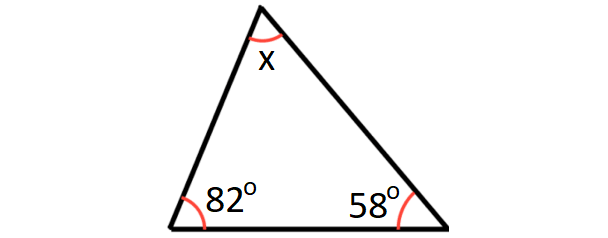
Problem 4 :
In the diagram shown below, what is the value of y?
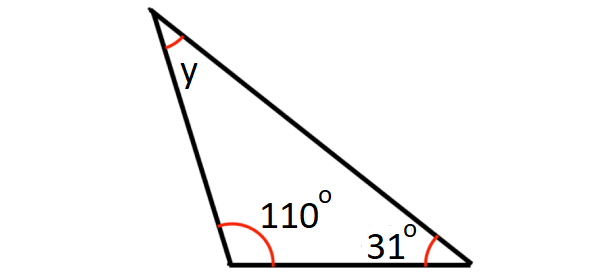
Problem 5 :
In the diagram shown below, what is the value of x?
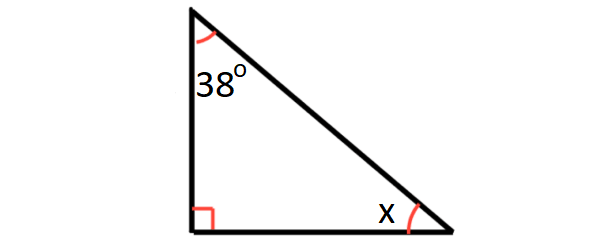
Problem 6 :
In the diagram shown below, what is the value of y?
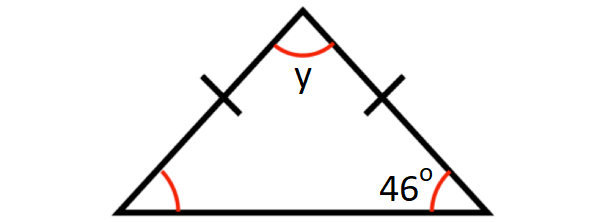
Problem 7 :
In the diagram shown below, what is the value of a?
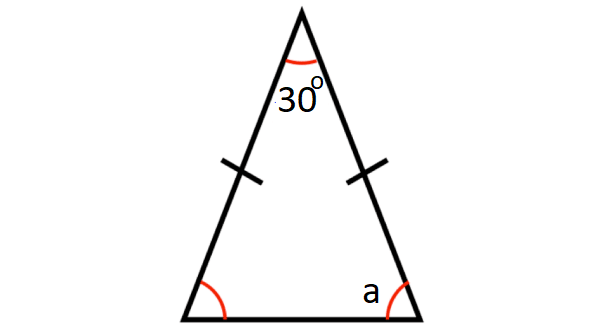
Problem 8 :
In the diagram shown below, what is the value of x?
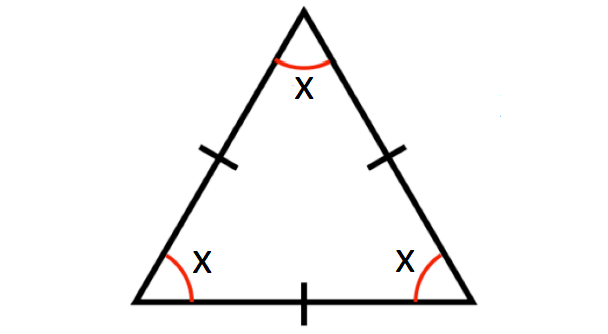
Problem 9 :
In the diagram shown below, what is the value of z?
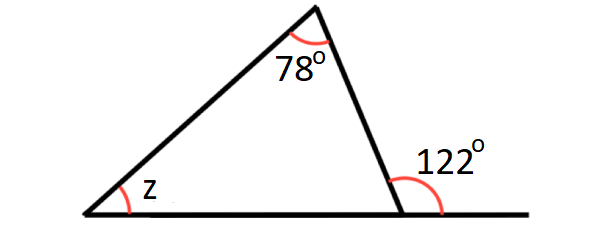
Problem 10 :
In the diagram shown below, what is the value of x?
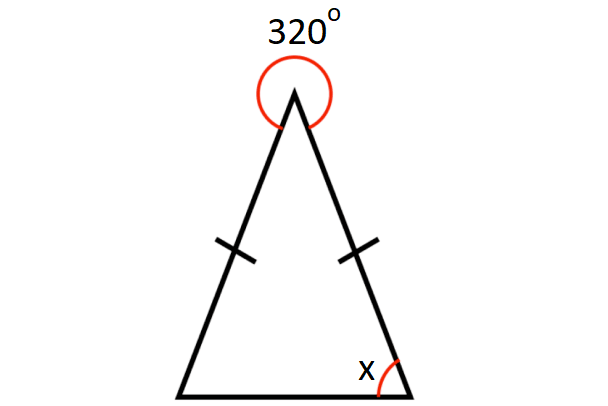
Problem 11 :
In the diagram shown below, what is the value of w?
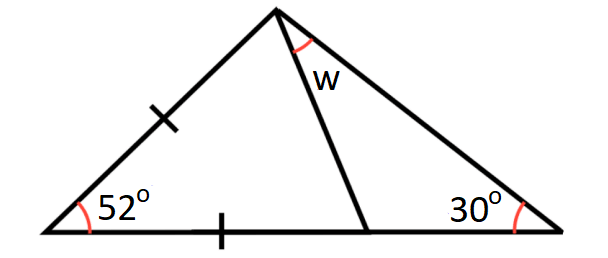
Problem 12 :
In the diagram shown below, what is the value of y?
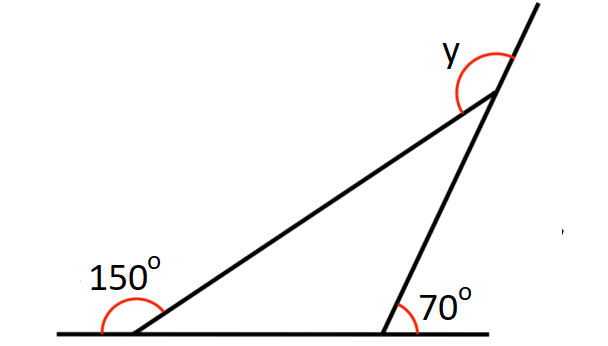
Problem 13 :
In the diagram shown below, what is the value of p?
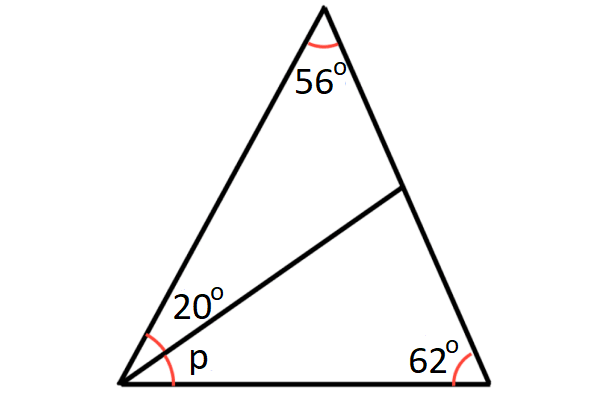
Problem 14 :
In the diagram shown below, what is the value of x?
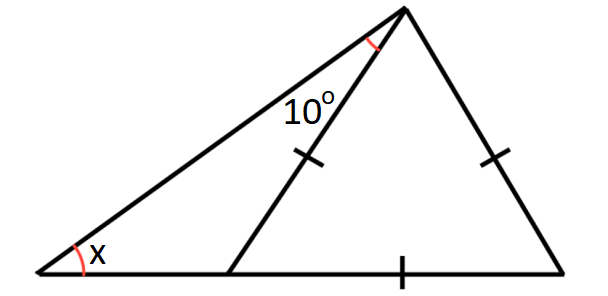
Problem 15 :
The first angle of a triangle is two-third of the third angle, the second angle is double the first angle. Find the three angles of the triangle.
Problem 16 :
In a triangle, sum of the first and second angles is 95°, sum of the second and third angles is 130° and sum of the first and third angles is 135°. Find the three angles of the triangle.
Problem 17 :
In the diagram shown below, triangle PQR is an isosceles triangle with PQ = PR and QRST is a rectangle.
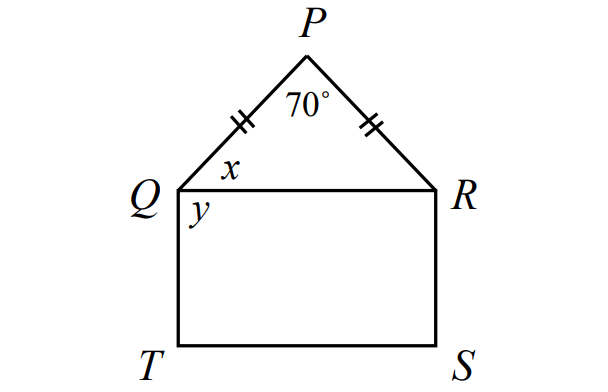
If m∠QPR = 70°, m∠PQR = x and m∠PQR = y, what is the value of (x + y)?
Problem 18 :
In the diagram shown below, AB and CD intersect at E. If triangle BCE is equilateral and triangle ADE is a right-angled triangle, what is the value of x?
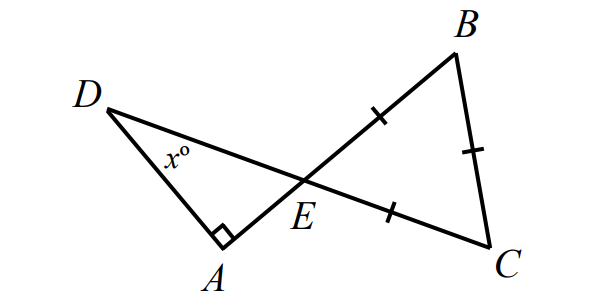

Answers
1. Answer :
We know that the sum of the angles in a triangle is equal to 180°.
If the given angle measures add up to 180°, then they can be the angles of triangle.
45° + 75° + 60° = 180°
Since the given angles measures 45°, 75° and 60° add up to 180°, they can be the angles of a triangle.
2. Answer :
Add the given angle measures and chech if they all add up to 180°.
28° + 99° + 64° = 191° ≠ 180°
Since the given angles measures 28°, 99° and 64° do not add up to 180°, they can not be the angles of a triangle.
3. Answer :

sum of the angles in a triangle = 180°
In the triangle shown above,
x + 82° + 58° = 180°
x + 140° = 180°
Subtract 140° from both sides.
x = 40°
4. Answer :

sum of the angles in a triangle = 180°
In the triangle shown above,
y + 110° + 31° = 180°
y + 141° = 180°
y = 39°
5. Answer :

sum of the angles in a triangle = 180°
In the triangle shown above,
x + 38° + 90° = 180°
x + 128° = 180°
x = 52°
6. Answer :
In a triangle, angles opposite to congruent sides must be congruent.
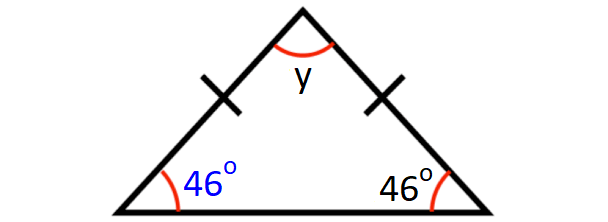
sum of the angles in a triangle = 180°
In the triangle shown above,
y + 46° + 46° = 180°
y + 92° = 180°
y = 88°
7. Answer :
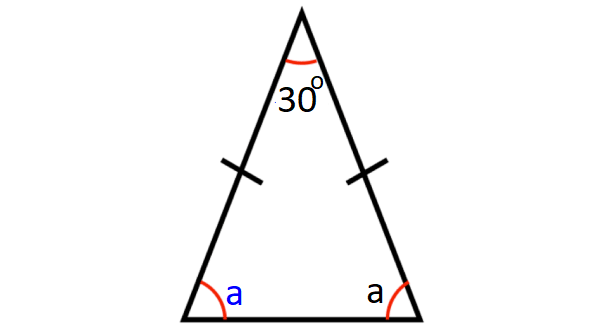
sum of the angles in a triangle = 180°
In the triangle shown above,
a + a + 30° = 180°
2a + 30° = 180°
2a = 150°
a = 75°
8. Answer :

sum of the angles in a triangle = 180°
In the triangle shown above,
x + x + x = 180°
3x = 180°
x = 60°
9. Answer :
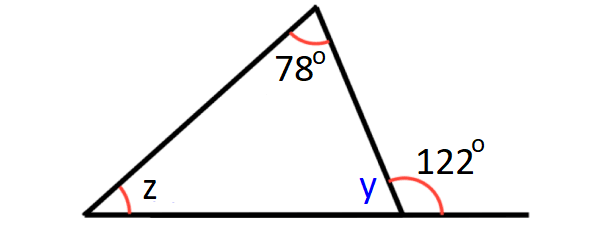
In the diagram shown above, y and 122° are linear pair.
y + 122° = 180°
y = 58°
sum of the angles in a triangle = 180°
y + z + 78° = 180°
Substitute y = 58°.
58° + z + 78° = 180°
z + 136° = 180°
z = 44°
10. Answer :
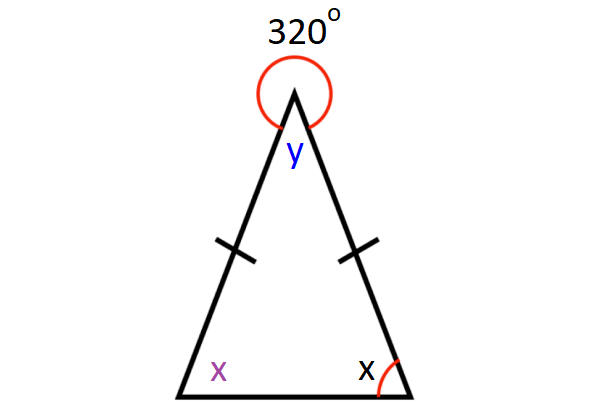
In the diagram shown above, y and 320° complete a full rotation.
y + 320° = 360°
y = 40°
sum of the angles in a triangle = 180°
x + x + y = 180°
2x + y = 180°
Substitute y = 40°.
2x + 40° = 180°
2x = 140°
x = 70°
11. Answer :
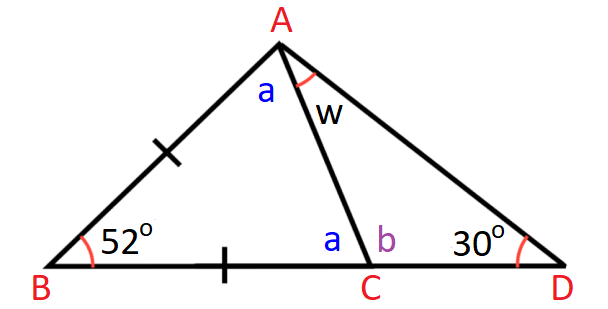
In ΔABC above,
a + a + 52° = 180°
2a + 52° = 180°
2a = 128°
a = 64°
In the diagram shown abpove, angles a and b are linear pair.
a + b = 180°
Substitute a = 64°
64° + b = 180°
b = 116°
In ΔACD above,
w + b + 30° = 180°
Substitute b = 116°.
w + 116° + 30° = 180°
w + 146° = 180°
w = 34°
12. Answer :
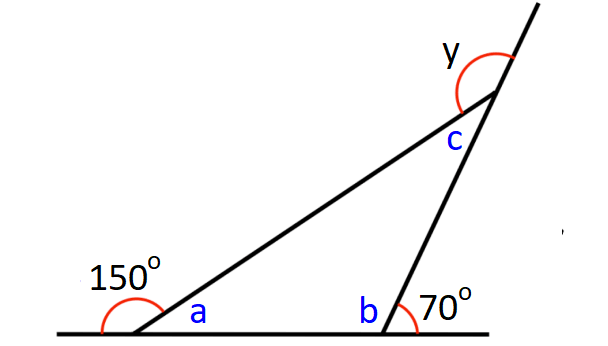
In the diagram shown above, a and 150° are linear pair.
a + 150° = 180°
a = 30°
b and 70° are linear pair.
b + 70° = 180°
b = 110°
In the triangle above,
a + b + c = 180°
Substitute a = 30° and b = 110°
30° + 110° + c = 180°
140° + c = 180°
c = 40°
c and y are linear pair.
c + y = 180°
Substitute c = 40°.
40° + y = 180°
y = 140°
13. Answer :
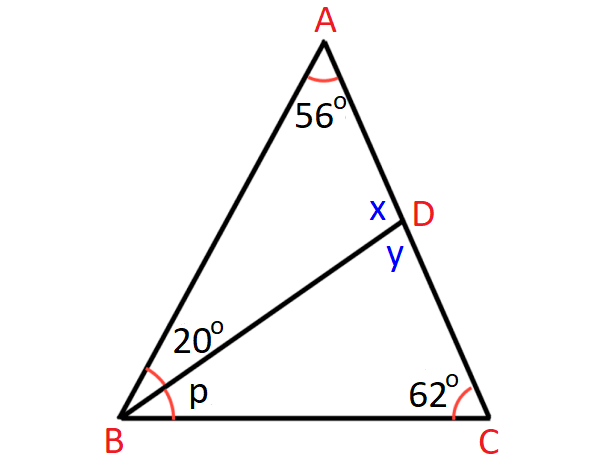
In ΔABD,
x + 56° + 20° = 180°
x + 76° = 180°
x = 104°
x and y are linear pair.
x + y = 180°
Substitute x = 104°.
104° + y = 180°
y = 76°
In ΔBCD,
p + y + 62° = 180°
Substitute y = 76°.
p + 76° + 62° = 180°
p + 138° = 180°
p = 42°
14. Answer :
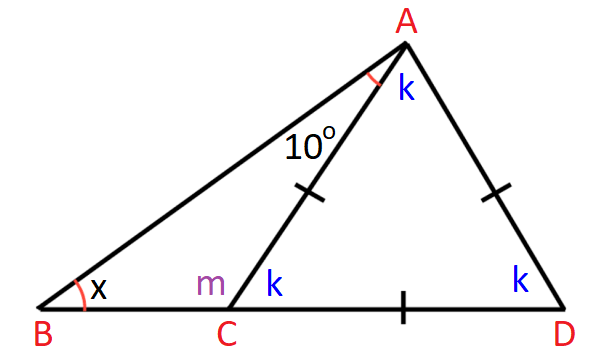
In ΔACD,
k + k + k = 180°
3k = 180°
k = 60°
k and m are linear pair.
k + m = 180°
Substitute k = 60°.
60° + m = 180°
m = 120°
In ΔABC,
x + m + 10° = 180°
Substitute m = 120°.
x + 120° + 10° = 180°
x + 130° = 180°
x = 50°
15. Answer :
Let x be the third angle.
Then, the first angle is ²ˣ⁄₃.
Second angle :
= 2 ⋅ ²ˣ⁄₃
= ⁴ˣ⁄₃
sum of the angles of a triangle = 180°
x + ²ˣ⁄₃ + ⁴ˣ⁄₃ = 180°
³ˣ⁄₃ + ²ˣ⁄₃ + ⁴ˣ⁄₃ = 180°
⁽³ˣ ⁺ ²ˣ ⁺ ⁴ˣ⁾⁄₃ = 180°
⁹ˣ⁄₃ = 180°
3x = 180°
x = 60°
third angle = 60°
first angle = ²ˣ⁄₃ = ²⁽⁶⁰⁾⁄₃ = 40°
second angle = ⁴ˣ⁄₃ = ⁴⁽⁶⁰⁾⁄₃ = 80°
The angles of the triangle are 40°, 80° and 60°.
16. Answer :
Let x, y and z be the first, second and third angles of the triangle respectively.
From the given information, we have
x + y = 95° -----(1)
y + z = 130° -----(2)
x + z = 135° -----(3)
Since x, y and z are the angles of a triangle,
x + y + z = 180°
Substitute 95° for 'x + y' [from (1)].
95° + z = 180°
z = 85°
Substitute z = 85° in (2).
y + 85° = 130°
y = 45°
Substitute y = 45° in (1).
x + 45° = 95°
x = 50°
The angles of the triangle are 50°, 45° and 85°.
17. Answer :
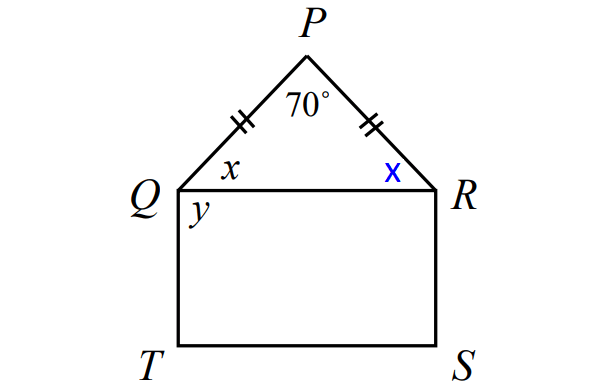
In ΔPQR above,
x + x + 70° = 180°
2x + 70° = 180°
2x = 110°
x = 55°
In a rectangle each vertex angle is a right angle.
y = m∠Q = 90°
x + y = 55° + 90°
= 145°
18. Answer :
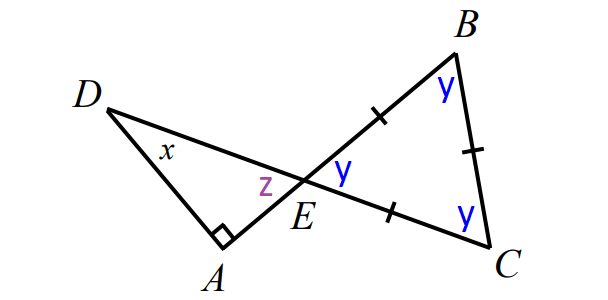
In ΔBCE above,
y + y + y = 180°
3y = 180°
y = 60°
In the diagram above, x and y are vertical angles
z = y
z = 60°
In triangle AED above,
x + z + 90° = 180°
Substitute z = 60°.
x + 60° + 90° = 180°
x + 150° = 180°
x = 30°
Subscribe to our ▶️ YouTube channel 🔴 for the latest videos, updates, and tips.
Kindly mail your feedback to v4formath@gmail.com
We always appreciate your feedback.
About Us | Contact Us | Privacy Policy
©All rights reserved. onlinemath4all.com

Recent Articles
-
US Common Core K-12 Curricum Algebra Solving Simple Equations
Jan 07, 26 01:53 PM
US Common Core K-12 Curricum Algebra Solving Simple Equations -
10 Hard SAT Math Questions (Part - 4)
Jan 05, 26 06:56 PM
10 Hard SAT Math Questions (Part - 4) -
10 Hard SAT Math Questions (Part - 3)
Jan 05, 26 06:34 PM
10 Hard SAT Math Questions (Part - 3)

